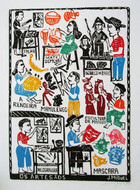Brazilian Cordel Woodcuts
The semi-arid sertao (“backcountry”) of Northeastern Brazil is big enough to contain the State of Texas and equally renowned for its cowboys, bandits, wide-open spaces, and homespun religious faith. Life has always been hard for the peasant-descendants of the first Portuguese settlers, who learned to survive in this draught-plagued land of cacti, thorn bush, and scrub.
Folks in the Wild East of Brazil took pleasure and solace in narrative poems set to music by repentistas (literally, “improvisers”), traveling minstrel bards who went from village to farm with a repertoire, incorporating local news and gossip. This oral tradition of sung poetry passed into print in what has become known as literatura de cordel, “string literature,” because the cheaply printed pamphlets of verse are sold at markets, fairs, and festivals hung out on wash lines.
These Brazilian-style chapbooks often have simple, eye-catching woodblock prints on their covers, made by local artisans or by the poet-balladeers, themselves, giving rise to a special genre of folk art xilogravura (woodcuts). These bold, stylized graphics advertise the adventures in verse of heroes and criminals (especially, Lampiao the Bandit); stories of the supernatural in which simple peasants outwit horned devils (often with the help of St. Peter or the saintly monk, Frei Damiao); traditional morality tales with bawdy, anti-clerical plot twists, where good always triumphs over evil; and sardonic treatments in verse of current events.
A sampling of titles from the contemporary “string literature” pamphlets in my collection illustrates the imaginative range of popular religious themes, depicted in these woodblock prints: The Example of the Girl Who Saw the Devil, The Hunter and the Mass, The Example of the Woman Who Sold Her Hair and Visited Hell, The Bandit Lampiao Arrives in Hell, The Example of the Girl Whose Navel Was on Fire, and The Church Founding and the Devil Pope.
When comic-book graphics and photo reproductions edged in on the cordel market, Brazilian xilogravura found new popularity as fine art prints, especially among international collectors, enamored of the simple designs of the original pamphlets. Foreign fame helped win these humble graphics greater recognition at home. “String literature” images now appear on record jackets, political posters, and public service bulletins, promoting causes like the battle against AIDS and the Zero Hunger program, launched in 2003 by Former President Luis Inacio Lula da Silva.
The best known cordel print-maker is Jose Francisco Borges, born in the Northeastern state of Pernambuco, where he still works out of a modest studio in his home town of Bezerros. Borges dropped out of school at the age of 12, finding jobs as a carpenter, potter, bricklayer, and seller of herbs, until he decided, in his 20s, to illustrate and print his own narrative poems and market them as “string literature.”
Borges did so well, he branched out in the 1960s into folio-sized multicolored variations of his pamphlet art like The Hooker Arrives in Heaven and The Hill of Miracles. He is now one of the best known folk artists in Latin America and has created hundreds of different types of literatura de cordel images.
The Brazilian xilogravura in the Sacred Art Pilgrim Collection are the work of Borges and his son, Ivan; his adopted son, Jose Miguel da Silva; and his brother, Amado Francisco. They offer a fascinating glimpse of daily life in the Northeastern frontier of Brazil, recording popular church festivals and religious rites in scenes in black and white and color by Borges of The Procession to End the Draught, The Cowboy Mass, and The Festival of Saint John the Baptist (Midsummer Night). In The Artisans, Jose Miguel da Silva shows eight types of regional folk art from mask-making and lace embroidery to clay sculpture and wood carving. The figure in the lower left shows the Borges clan at work, pulling prints from inked wood blocks.
Popular saints abound in the family's store of stock images like the Borges portrait print of Saint John the Baptist, who carries a lamb, representing Christ, Saint Francis, preaching to the birds, and Saint Anthony the Matchmaker, an intercessor for the lovelorn seeking spouses. Angels come in all shapes and sizes. Depictions of well-known biblical narratives by Borges and kin include Adam and Eve (by Jose Miguel da Silva); The Birth of Jesus (by Borges); The Manger (by Ivan Borges); The Lord's Supper and Forgiveness for All (by Amado Francisco Borges); and The Temptation (by Givanildo Borges).
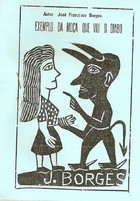
Jose Francisco Borges
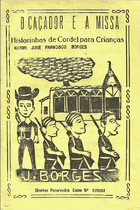
Jose Francisco Borges
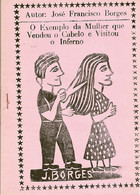
Jose Francisco Borges

Jose Francisco Borges
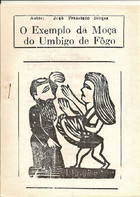
Jose Francisco Borges
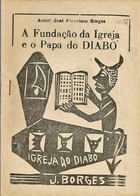
Jose Francisco Borges
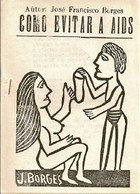
Jose Francisco Borges
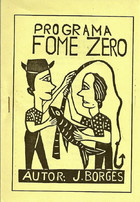
Jose Francisco Borges
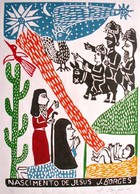
Jose Francisco Borges
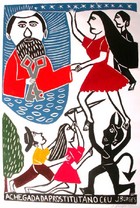
Jose Francisco Borges
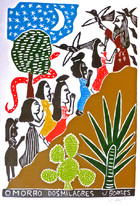
Jose Francisco Borges
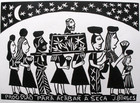
Jose Francisco Borges
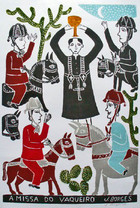
Jose Francisco Borges
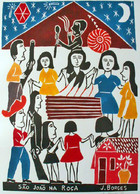
Jose Francisco Borges
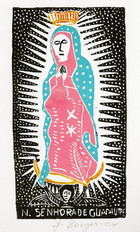
Jose Francisco Borges
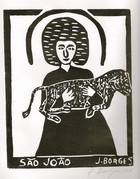
Jose Francisco Borges
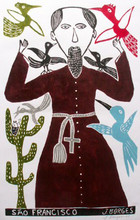
Jose Francisco Borges
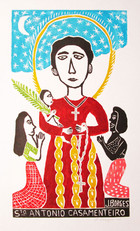
Jose Francisco Borges
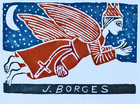
Jose Francisco Borges
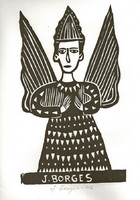
Jose Francisco Borges

Amaro Francisco Borges
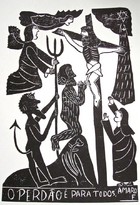
Amaro Francisco Borges
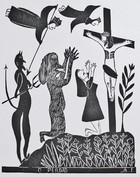
Amaro Francisco Borges
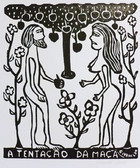
Givanildo Borges
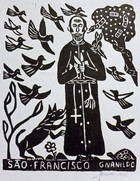
Givanildo Borges
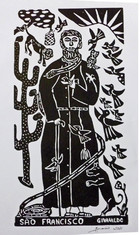
Givanildo Borges
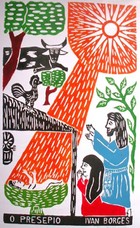
Ivan Borges
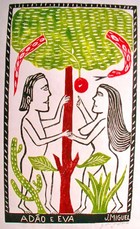
Jose Miguel da Silva
